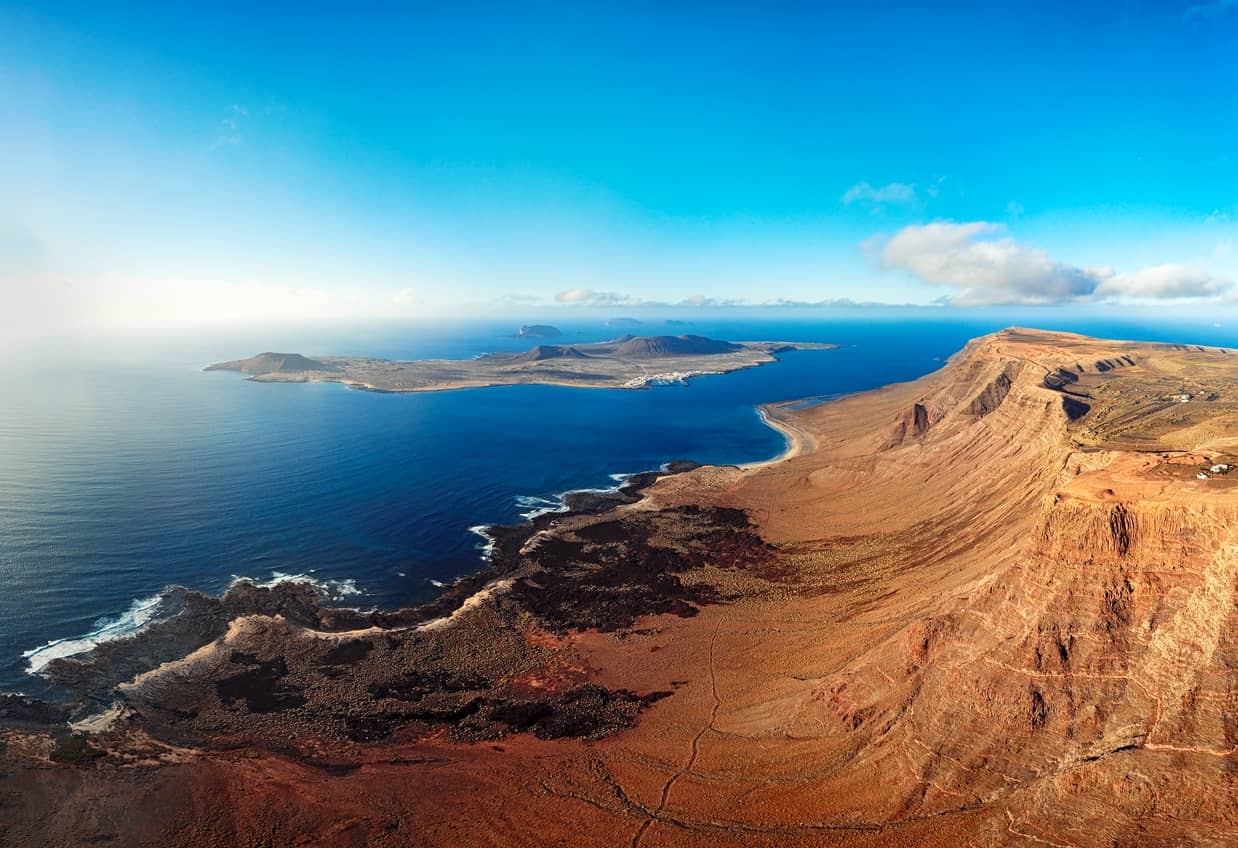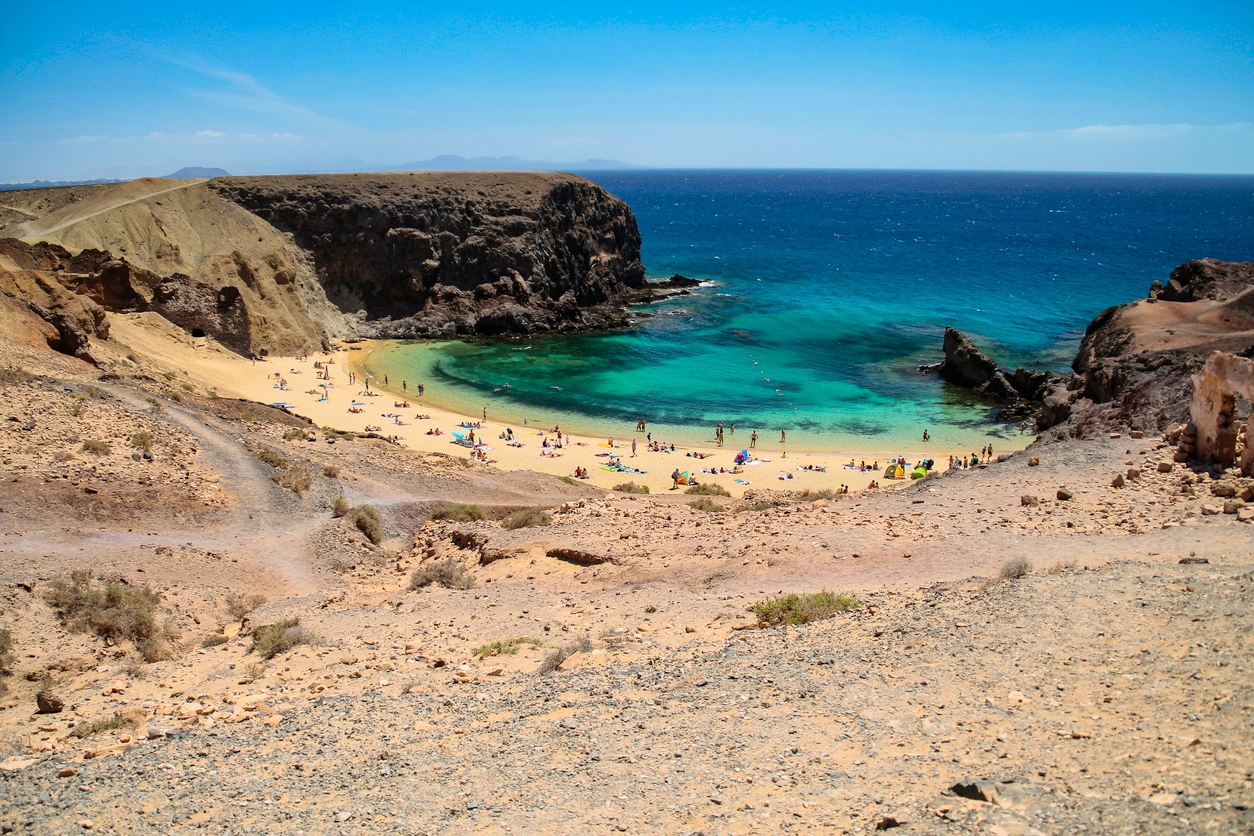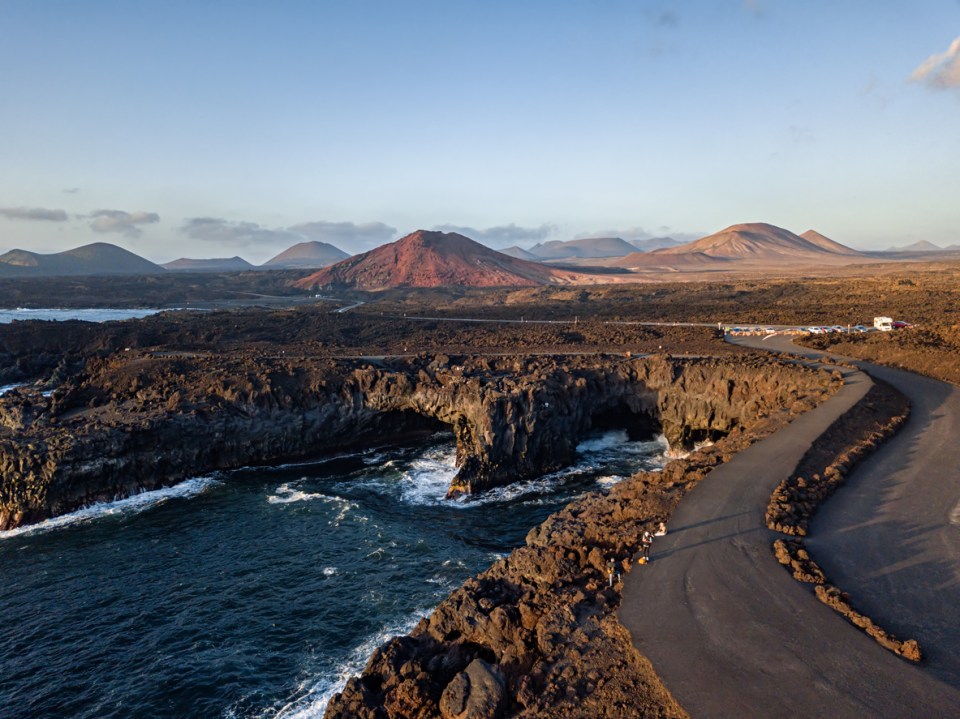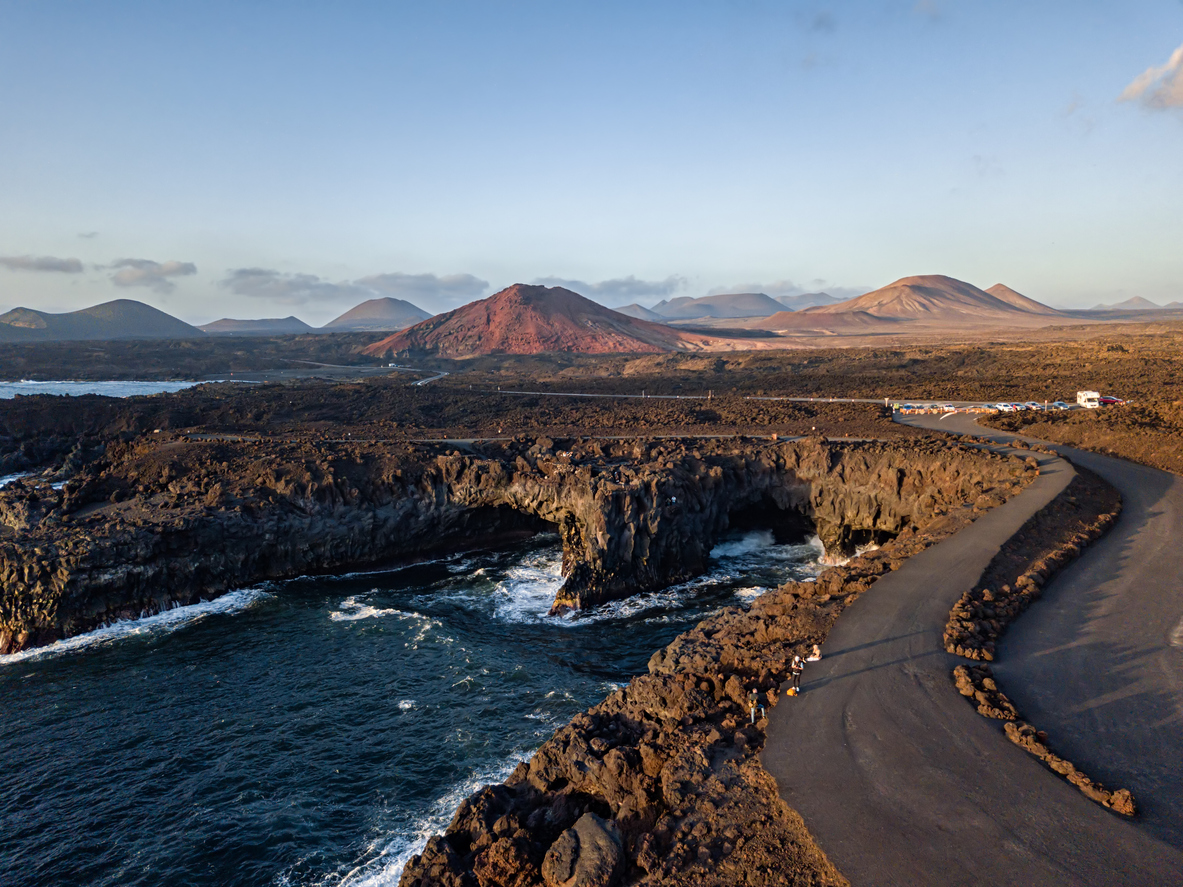I never realised Lanzarote was such a weird place. During an extended Camino de Santiago pilgrimage to escape UK lockdowns, various pilgrims I met urged me to visit the splendours of the Canary Islands as a natural sequel to the splendours of the Iberian Peninsula we traversed. But Lanzarote was rarely mentioned.
As soon as you land at the north easternmost of the eight main Canary Islands you quickly appreciate there’s much more to it than cheap bars, piña coladas and the often-derided Brits Abroad vibe. Looming over the airport—whose runway must be a contender for one of the world’s greatest, though more of that later—is a landscape of volcanic mountains that looks like a cross between the surface of the Moon and Mars. While stretching away to the horizon is the vast expanse of the Atlantic Ocean. It’s a striking mix, as is the whole composition of this small 845-square-kilometre island, lying only 80 miles off the Moroccan coast, and formed—like all the Canary Islands—by volcanic eruptions millions of years ago.

This Remembrance Sunday, by way of distraction, I struck out toward one of those distant peaks. Ascending a ridgeline, I could see in the distance on the western side of the island the emerald-green waters of the Laguna y Salinas de Janubio. Created by those volcanic eruptions, which formed a barrier of lava between the lagoon and the sea, since 1895 its waters have been evaporated in the adjacent salt pans. The geometric pattern of the pans and their different colours—depending on the amount of water in each—stand out like an enormous work of art or strange totem, as do the adjacent rows of cone-shaped salt piles, brilliant white in the sun.
At the summit, surrounded by a bundle of masts and satellites belonging to the island’s communications systems, I gazed down at Playa Blanca at the southern tip of the island, its bars, restaurants and resorts a British bastion for many of those holidaymakers arriving at the airport. The day before I’d mingled down there with my people, striking as ever when let loose on foreign shores and no less beefy or less prone to go lobster red in the sun after continuous lockdowns. As I descended, the softer light of the sun setting behind me turned the dirt I was walking along a burnt orange, while the moon already stood out vividly to my front. Dotted around were multi-coloured cacti straight from an Aldous Huxley psychedelic vision. It felt like I had been transported to the landscape of the new Dune film. Set against the frolics that most holiday makers come for, it all contributed to a strange sense of the superfluous and hedonistic mixed with the grandiose timelessness of nature and the cosmos.

Despite the island’s interstellar exploratory qualities, my favourite spot turned out to be right where I had arrived. Between the start of the airport’s runway and the ocean is about 50 metres of beach. People gather there to watch the jets emerging from the cloudless sky in the distance above the sea. ‘We can’t stop coming back here to watch it all,’ commented a British lady looking out toward the sea like I and the others there. Seen from afar, the aircraft’s external lights look like a car’s headlights emerging serenely from the azure blue before the jet screams in right above your head thrown back just before the screech of tires landing.
Once the sun has set, those same ‘headlights’ cast a moon-like corridor of reflection on the sea’s tremulous surface as each aircraft approaches. Perhaps the five-euro bottle of tasty El Coto Rioja Crianza wedged in the sand beside me had something to do with it, but not since the sight of a C-130 Hercules transport plane approaching to land in Iraq has the sight of aircraft making their landing and take-off manoeuvres filled me with such jubilation. Ryan Air! Easy Jet! Vueling! Jet2! Never have the names and logos of lost-cost airlines appeared as such talismans of freedom and adventure, after nearly two years of travel restrictions. And now, on top of that, increasingly there appears a big wagging finger from our rulers aimed at our irresponsible Carbon-emitting lives, indulging in such outlandish demands as holiday flights to sunnier climes for respite with loved ones.
But is jet travel all bad when it can plant you in a matter of hours into such otherworldly landscapes? Pope Benedict XVI captured the dichotomy during his famous 2006 ‘Regensburg Address’ to various representatives of science: ‘The positive aspects of modernity are to be acknowledged unreservedly: we are grateful for the marvellous possibilities that is has opened up for mankind and for the progress in humanity that has been granted to us.’
One day the runways—or more likely launchpads—may be taking future generations of holiday makers to truly more Martian climes. I hope so. For now, though, we have the lunar landscape of Lanzarote to spark our imaginations. Furthermore, it’s eastern-most position in the archipelago makes it a great launchpad for exploring the constellation of islands strung out westward. Fuerteventura is a short ferry ride from Playa Blanca and to its west lies Gran Canaria, while Tenerife is the next along and so on—each volcanic island offering their own marvellous variations on the Martian theme.







Comments